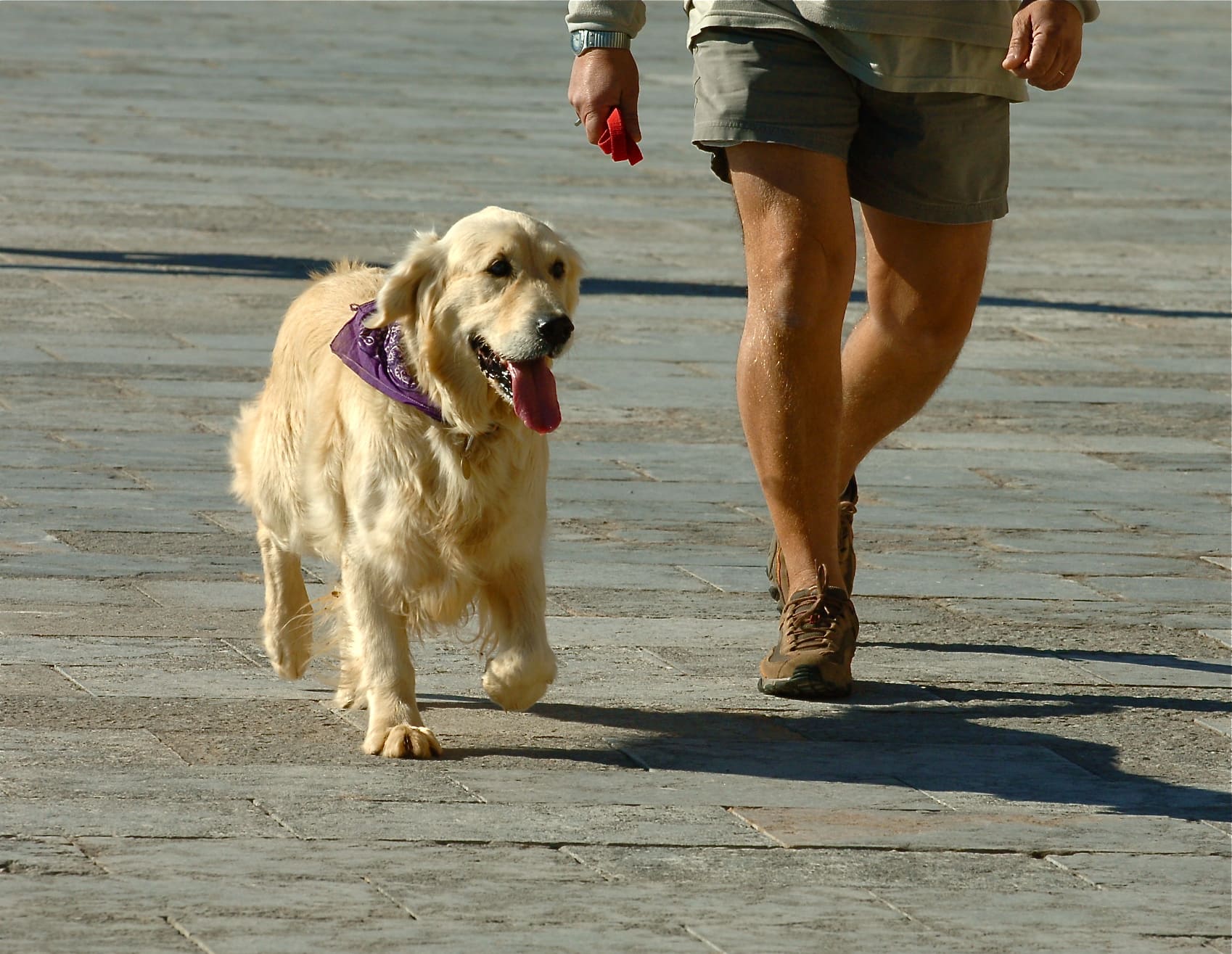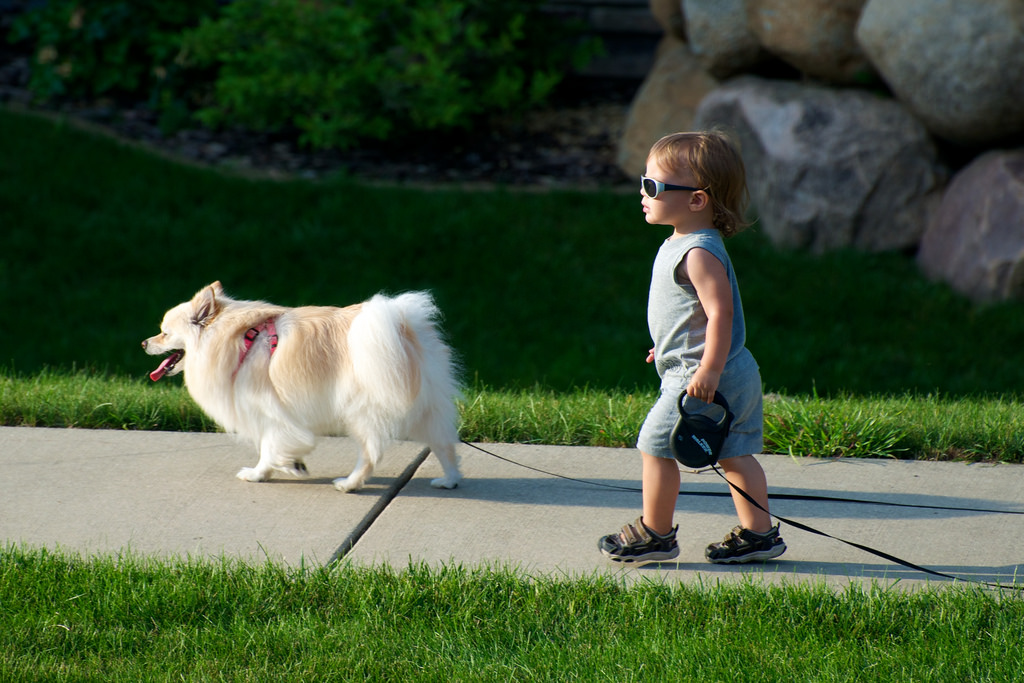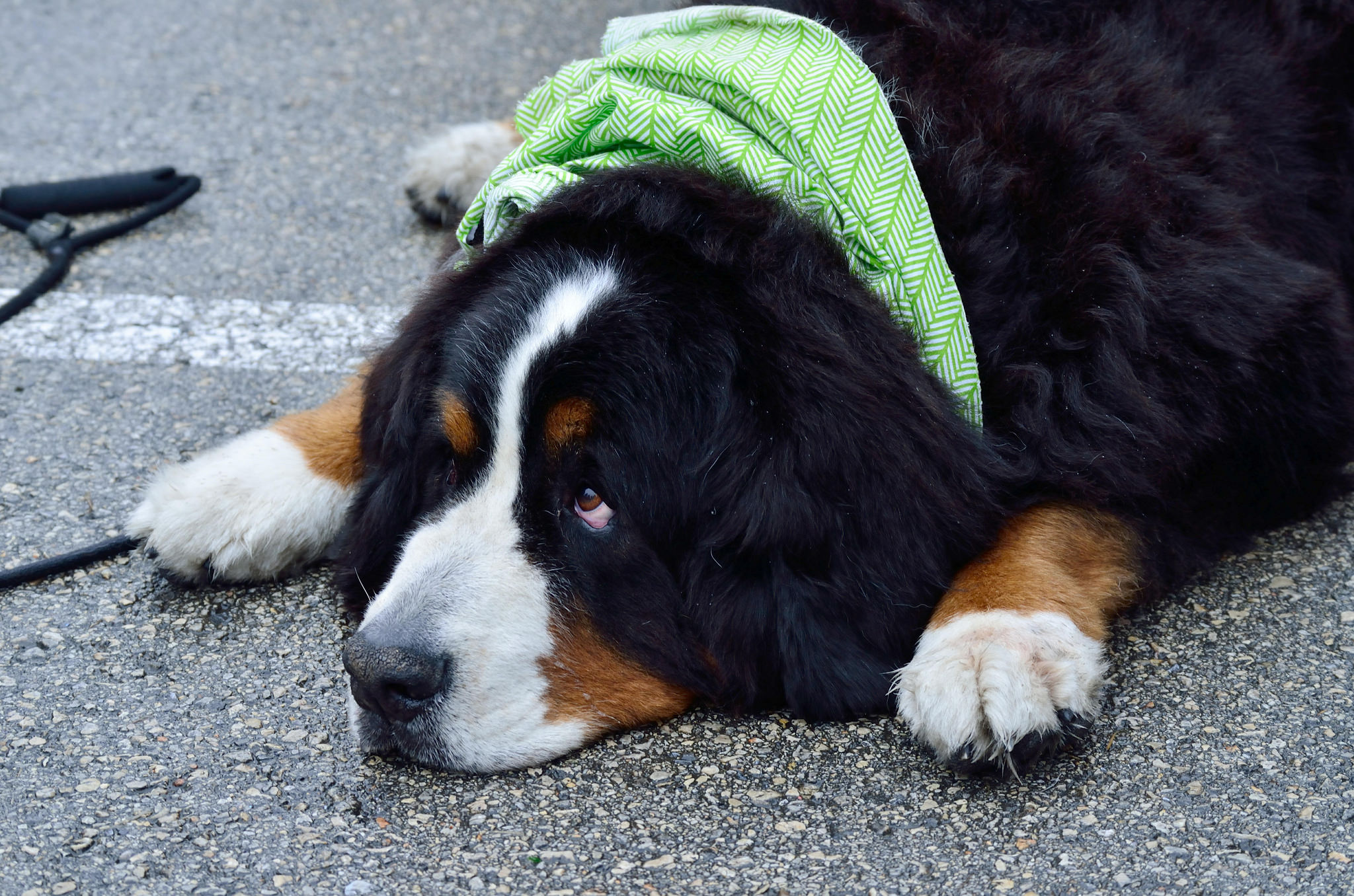How do you know it's too hot out to walk your dog?

Summer is nearly here and in some places it’s already sweltering.
But whether you hail from a mild clime or somewhere more extreme, it’s important to protect your dog from the summer heat while still making sure they get enough exercise.
Just how hot is too hot? You might be surprised at the answer.
Your dog loves being outside and can overheat or suffer from burned paws before they start to show signs of discomfort, so it’s important to check the weather before you go out to make sure conditions are friendly enough for a walk. You also have to pay attention to differences in temperature based on your surrounding surfaces: Asphalt, for instance, becomes far hotter in the sunlight than grass ever will, although both can be dangerous.
Just because the temperature outside seems cool enough for your dog doesn’t mean the ground won’t hurt your pet’s paws. Ground surfaces – even grass – spend all day absorbing heat energy and sunlight and can reach the mid-100s on a summer day even while the air temperature remains in the double digits. And don’t be fooled if you live somewhere cool: The temperature of asphalt can reach 125 degrees in 77-degree weather.
Humidity also plays a role in how uncomfortable your dog may feel in the heat.
“Animals pant to evaporate moisture from their lungs, which takes heat away from their body,” according to Dr. Barry Kellogg, VMD, of the Humane Society Veterinary Medical Association. “If the humidity is too high, they are unable to cool themselves, and their temperature will skyrocket to dangerous levels — very quickly.”
Because of all of these variables, there’s no one answer to what temperature is too hot for a walk. That said, there are signs to watch for that make it obvious it’s too warm for your pup, and paying attention and using common sense will go a long way in making sure your dog isn’t in danger in the summer months.
If you’re short on time, know this: Ground temperatures can be far hotter than air temperatures in the summer, so don’t take your dog out if you feel uncomfortable placing your hand on the ground for 10 seconds.
Dangers of walking your dog when it’s too hot
Just like you and I can get sunburns or even suffer heat stroke when it gets too hot outside, a dog can experience anything from mild discomfort to more extreme symptoms from overheating when the weather’s not cooperative.
Dogs who are exposed to high temperatures for long periods of time are at risk of dehydration and overheating, which can lead to more serious problems like “heat exhaustion, heat stroke or sudden death from cardiac arrhythmias,” according to the Animal Health Foundation of the American Kennel Club.
Special danger to their paws
Your dog’s paws are in special danger in the summer heat due to the dramatic difference between air temperature and ground temperature. Many pet owners assume dog paws are tougher than they actually are because dogs spend their lives walking around on various surfaces to roughen them up, but that actually isn’t the case.
Paw pads do provide some insulation against extreme weather conditions, of course, and dogs that spend more of their time outside or walking on rough surfaces will have tougher pads than those that spend most of their time on smooth surfaces like hardwood floors. But even work dogs are susceptible to injuries caused by walking on hot surfaces, as their padding is not nearly enough to protect them from the kind of heat they can experience on summertime walks.
Burned paws can be incredibly painful for your pup and can lead to blisters, cracking or even missing pieces of the paw pad, so it’s important to consider the weather and walking surface before talking your pet out.

Remember to keep a special eye on your dog’s paws in hot weather. Image: Josh Puetz
How to tell if it’s too hot out for your dog
Sometimes it’s obvious that the weather’s not right for a walk: If it’s too hot for your own comfort, it’s too hot for that of your dog. And if, like me, you live somewhere like Las Vegas where the temperature climbs into triple digits on a regular basis, you definitely don’t need a test to tell you what your weather app can without stepping outside. 115 degrees is obviously dangerous for animals. But what about for those days when you’re just unsure?
There’s a simple test that will quickly tell you whether you should rethink your walk, according to Banfield Pet Hospital. Just put your bare hand or foot flat on the walking surface for 10 seconds. If you can’t comfortably keep it there, your pet won’t be able to, either.
And remember, it’s better to be safe than sorry. If you’re still unsure of whether it’s too hot out after testing out the surface for yourself, go ahead and assume it’s too hot for your dog.
The test will tell you if the pavement is too hot, but it’s still important to pay close attention to what your pet is doing, since even if they escape burned paws, they might still be in danger of overheating – especially on long walks. Walks through grass under the shade of trees or buildings may protect their paws, but on humid days that won’t do much for your dog’s ability to cool down.
Make sure to watch for signs of overheating:
- Panting, followed by disorientation and fast, noisy breathing
- Collapsing or convulsing
- Bright red or blue gums
- Vomiting and diarrhea
Sometimes a dog may simply lie down and refuse to move when he’s feeling too hot. If that happens, don’t force your dog to finish the walk. Every dog has a different heat tolerance, just like all of us do.
My first year having a dog in Las Vegas was a crash course in his unique heat tolerance. There were times during the summer I thought it’d be fine to take him out after dark even though it was still hot, only to pick him up and carry him home halfway through the walk because I was worried he was getting too hot.
Come springtime, I thought I didn’t have as much to worry about. How could an 80-degree March day be too warm? But it was for my 5-pound chihuahua mix. Unlike myself, Buster was happiest in a mild climate, so I had to adjust our walk schedules accordingly.
What to do if your dog starts to overheat
It’s always scary when your dog is sick or in danger, and the best route is obviously doing what you can to make sure your dog doesn’t start to overheat in the first place. But what happens if they overheat despite your best efforts?
You may be tempted rush home and dunk your dog in ice-cold water when you notice signs of overheating, but it’s important to be smart about how you treat heat-related illnesses.
Get your dog to a water source and wet their with cool water – not ice-cold. Freezing cold water constricts blood vessels, which can actually make it more difficult for your dog to cool down. Wrap your pet in a towel wet with cool water and get to the vet. Call your vet on the way to make sure they’re ready for an emergency visit.
What to do if your dog burns their paws
If your dog starts licking at their feet or limping after a walk, you should soothe their feet in a bath of room-temperature water. According to Lynn Buzhardt, a doctor of veterinary medicine with VCA Animal Hospitals, this helps to soothe minor burns and reduce their effects.
Keep an eye on their paw pads. If they become discolored, blister or you can see the tissue underneath, get to a vet for professional treatment. And if you’re ever not sure about an injury, it’s always a safe bet to get it checked out, anyway.

Taking your dog out when it’s too hot could lead to injured paws. Image: MarkScottAustinTX
How to exercise your dog in a hot climate
Depending on where you live, getting your dog exercise in the summer may simply mean adjusting your schedule and walking your dog earlier in the morning or later in the evening than usual. For those of us who live in hot climates, though, keeping our dogs active can be more difficult. Here are some suggestions for working around the heat to keep your dog happy and healthy, no matter where you live.
What to do if the ground temperature is too hot
If the ground temperature is too hot for your dog but the overall weather is OK for a walk, you have a few different options, depending on how hot it is:
- Walk your dog on the grass, which in moderate temperatures will be much better for your pet than asphalt or concrete.
- Skip the walk and go straight to a grassy dog park.
- Use paw wax. The wax won’t keep your dog safe when pavement is extremely hot, but it will lessen the effects of warm pavement on your dog’s paw pads.
- Invest in doggy booties. Booties can be used for a variety of reasons, but if you’re looking to protect your dog from the heat, make sure to get booties made for that purpose. Avoid rubber or silicone unless the manufacturer notes the booties are made to withstand warm temperatures. Find our recommendations for dog booties here.
What to do if it’s too hot for a walk, period
If it’s too hot to take your dog outside without risking overheating him, you still have options to keep your dog active. You may be able to adjust your walk schedule to a cooler time of day, but that can be difficult if you live somewhere with temperature extremes.
I had to get creative with Buster’s exercise when I adopted him. Summer temperatures in Las Vegas stay in the 100s well after dark and don’t cool down enough for comfortable dog walks until it’s far too late to walk safely, especially once you take into account how much longer it takes the ground to cool down.
Because my dog is tiny and already gets a decent amount of exercise from running around the house and playing throughout the day, I didn’t have to make up for a huge amount of exercise time every day. I usually tried to wake up to walk him around sunrise, but I did have one trick up my sleeve for days he just had too much puppy energy to function. You know how dogs get a burst of energy sometimes that has them tearing through the house faster than you thought possible? I used those zoomies to my advantage.
Like a parent sending a toddler outside to run around and release energy, I knew when my dog started misbehaving that he hadn’t had enough exercise that day. So I would purposefully wind him up with his favorite toy and watch as he streaked around the house for 5-10 minutes straight before coming to curl up next to me and rest.
I had the benefit of working from home and being able to play with my dog throughout the day (and observe how much exercise he was getting). If your dog isn’t small enough to get enough exercise at home, there are other options: You can walk your dog at pet stores and other pet-friendly retailers, utilize your stairs by playing fetch from one end to the other or even put your dog on your treadmill, as long as you’re careful to train him properly. It’s best to talk to your vet beforehand.
You can also have a doggy play date so you and a friend can exercise and socialize your pups at the same time. Whatever you do, it’s more important to get creative about exercise that to get worried your dog isn’t getting enough of it and risking overheating or paw burns by walking him outside when it’s too hot.
There’s no one answer to the question of how hot is too hot for a dog, as a variety of factors can come into play, but here are some things to remember the next time you take your pup for a walk:
If it’s too hot for you, it’s too hot for your dog. Test the ground temperature by putting your hand or bare foot flat on the ground for 10 seconds. If you can’t hold it there for 10 seconds, don’t let your dog walk on it.
Watch for signs of overheating or burned paws in your dog when you do walk them, including limping, disorientation, collapsing and vomiting. If you do think your dog is overheating, quickly cool them down and get to a vet.
It’s still possible to exercise your dog in the heat, whether you play with them inside, set up a play date or go somewhere indoors that’s dog friendly.
Always trust your instincts when it comes to your pet. If you think it might be too hot outside for a walk, it probably is, and it’s always best not to risk your dog’s well-being. Remember, no one knows your pup better than you.
-Steph Grimes
Steph is a Las Vegas-based writer and dog lover who edits Natural Dog Owner. When she’s not traveling or holed up writing at a cafe, she can usually be found outside meeting new dogs.
Feature image: Pedro Ribeiro Simões
